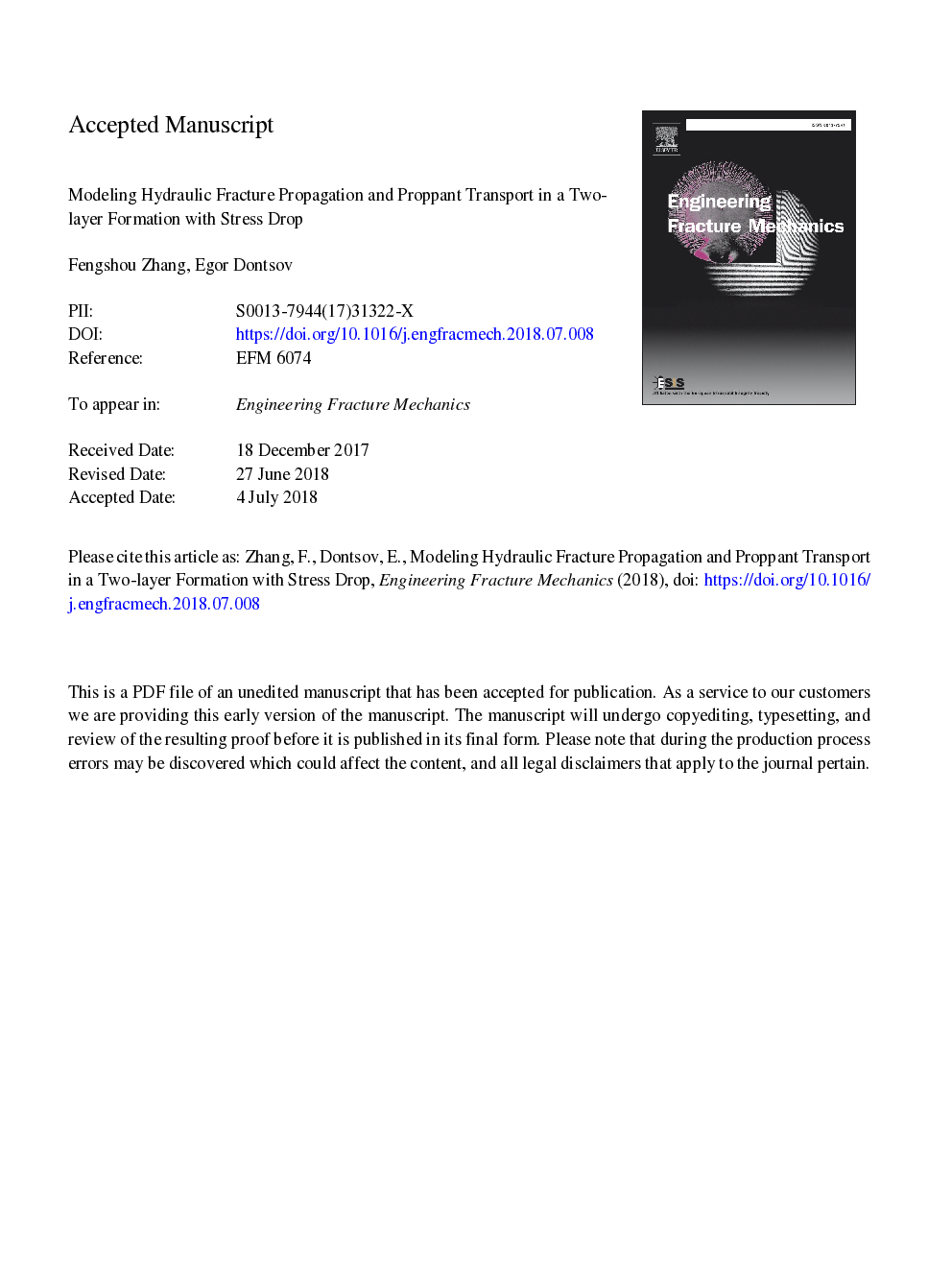| Article ID | Journal | Published Year | Pages | File Type |
|---|---|---|---|---|
| 7168733 | Engineering Fracture Mechanics | 2018 | 35 Pages |
Abstract
Three-dimensional distinct element code is utilized to study hydraulic fracture propagation and proppant transport in a two-layer formation with stress drop. The fracture is initiated in the primary layer with high stress and propagates upwards into the low stress layer in the viscosity dominated regime. The hydro-mechanical coupling causes pinching and smaller aperture at the interface between the stress layers. The results indicate that the pinching at the stress interface can greatly affect the proppant transport. Critical proppant size can be defined above which the proppant is blocked and cannot enter the low stress zone. Large sized proppant could further intensify the pinching effect because the screen out leads decreased fluid supply to the low stress zone. Small sized proppant, on the other hand, could ease the pinching by increasing viscosity of the slurry relative to clean fluid. In order to have an ability to determine the critical proppant size, we have developed a relation between the dimensionless pinching aperture and the dimensionless stress for viscosity dominated fractures. This relation can be applied to estimate the pinching aperture for any given injection and rock parameters, and to provide guidelines for selecting optimal proppant size in the field operations for cases of controlling fracture height growth in the vertical direction and optimizing the extent of fracture lateral propagation when carrying out the infill well fracturing.
Related Topics
Physical Sciences and Engineering
Engineering
Mechanical Engineering
Authors
Fengshou Zhang, Egor Dontsov,
